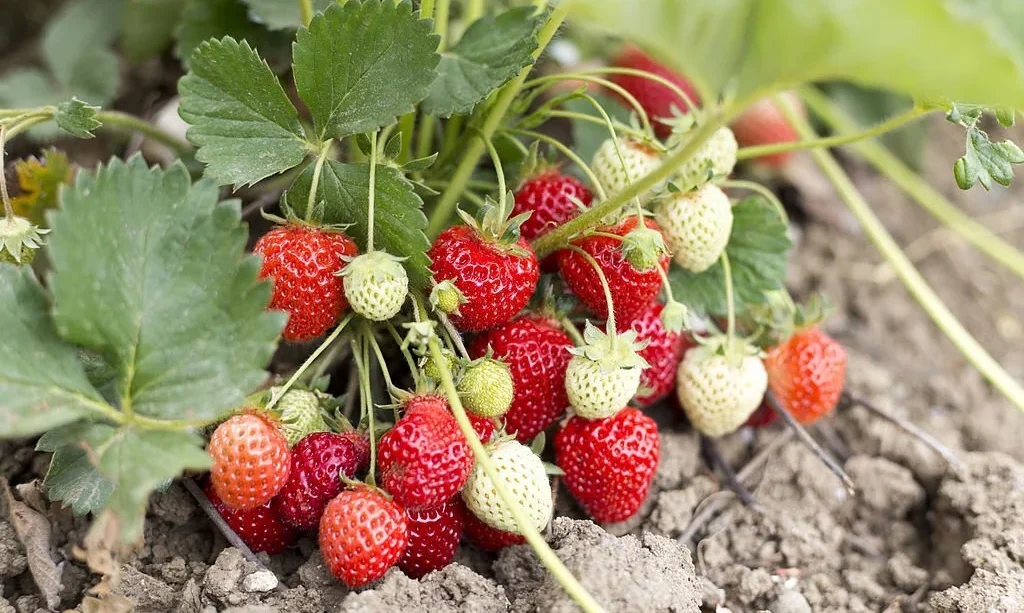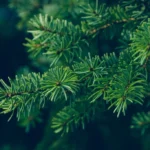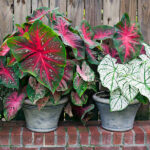Imagine eagerly waiting for your strawberries to ripen, only to be disappointed by their small size. It can be frustrating to put effort into growing strawberries, only to end up with tiny fruits. But fear not! In this simple guide, we’ll explore the reasons behind small strawberries and help you understand the factors that influence their growth and size. By understanding the process and addressing these factors, you can cultivate plump and juicy strawberries that will satisfy your taste buds. Let’s dive in and unlock the secrets to growing larger strawberries!
- FOR USE ON: Use Berry-tone organic fertilizer for all berries including blueberries, strawberries, raspberries, and blackberries
- CONTAINS: Berry-tone is a rich blend of the finest natural & organic ingredients enhanced with our exclusive Bio-tone formula; 4-3-4 Fertilizer analysis with 5% Sulfur. Berry-tone is environmentally Safe – No sludges or toxic ingredients
- WHEN / HOW TO USE: Best to use Berry-tone fertilizer when planting or feeding established plants; most berries are best fed twice each year in early and late Spring. Berry-tone is ready to use and requires no mixing
- FOR ORGANIC GARDENING: Berry-tone is approved for organic gardening; It is a registered Organic Input Material meaning it meets all requirements for organic production
- MADE IN THE USA: Product of the Espoma Company. The leader in natural organics since 1929
Strawberry Growth and Size
Strawberries go through a remarkable journey from flower to fruit. Understanding the growth process will shed light on why some strawberries turn out smaller than expected. Here’s what you need to know:
- Flower to Fruit: After strawberry plants flower, pollination occurs, and the ovaries develop into tiny green fruits. As the fruits mature, they gradually increase in size, eventually reaching their full ripeness.
- Factors Affecting Size: The final size of strawberries is influenced by various factors, including genetics, environmental conditions, and plant care. While some factors are beyond our control, there are steps we can take to encourage larger fruit development.
By understanding the growth process and the factors at play, you’ll be better equipped to address any issues that may result in smaller strawberries. In the following sections, we’ll explore common factors that contribute to small strawberry size and how to overcome them.
Lack of Proper Pollination
Proper pollination is vital for strawberries to develop into plump and juicy fruits. Here’s what you need to know:
- Pollination Process: Strawberries rely on pollinators, such as bees and other insects, to transfer pollen from the male to the female parts of the flowers. This process is essential for fertilization and fruit formation.
- Lack of Pollination Impact: If strawberries are not adequately pollinated, it can result in smaller or misshapen fruits. Insufficient pollination means that not all the tiny seeds within the fruit develop fully, leading to reduced size.
To address this issue, encourage pollinators to visit your strawberry plants by planting bee-friendly flowers nearby or providing nesting sites. Additionally, consider gently brushing the flowers with a soft brush to simulate pollination if natural pollinators are scarce.
- 100% WATER SOLUBLE: Strawberry Fertilizer Powder is water soluble and an amazing product strawberries. Apply to your strawberry patch and you will get bigger brighter strawberries, increased berry yields and increased vigor
- FORMULATED WITH MICRONUTRIENTS: Greenway Biotech Strawberry fertilizer that includes 8-12-32 plus micronutrients and trace minerals. It contains all nutrients required by plants in a proper ratio & form
- QUALITY INGREDIENTS: This plant fertilizer is professionally formulated with quality ingredients and Contains 8% Nitrogen, 12% Phosphorous, 32% Potassium, Boron, Copper EDTA, Iron EDTA, Manganese EDTA, Zinc EDTA, and Molybdenum, Results are distinct & visible.
- HYDROPONICS AND SOIL USE: Our Strawberry plant fertilizer is specially blended to ensure your plants receive the proper amount of nutrients whether grown hydroponically or in the soil. Complete balanced nutrition results in better flowering, in season.
- ALL NATURAL: Our fertilizer powder boosts strawberry growth because it is free of heavy metals and materials and it is designed to provide a steady supply of naturally occurring nutrients and trace elements
Insufficient Nutrients
Strawberries require a balanced supply of nutrients to grow and develop properly. Here’s what you need to know:
- Essential Nutrients: Strawberries need a sufficient amount of nitrogen, phosphorus, potassium, and other essential nutrients for optimal growth and fruit development.
- Impact of Nutrient Deficiencies: When strawberries lack adequate nutrients, it can hinder their growth and result in smaller fruits. Nutrient deficiencies can lead to stunted plants, weak fruiting, and decreased fruit size.
To ensure your strawberries receive the necessary nutrients:
- Amend the soil with organic matter, like compost or well-rotted manure, before planting.
- Apply a balanced fertilizer specifically formulated for strawberries according to the package instructions.
- Monitor the plants for signs of nutrient deficiencies, such as yellowing leaves or slow growth, and address them promptly by adjusting fertilizer application.
By providing the right nutrients, you’ll support the overall health and size of your strawberry fruits.
In the following sections, we’ll explore other factors that can contribute to small strawberries, such as inadequate watering and overcrowding. Stay tuned to maximize your strawberry harvest!
Inadequate Watering
Proper watering is crucial for the healthy growth and size of strawberries. Consider the following:
- Consistent Watering: Strawberries require consistent moisture to develop plump and juicy fruits. Inconsistent watering, such as allowing the soil to dry out completely or overwatering, can result in smaller berries.
- Watering Techniques: When watering strawberries, aim to keep the soil consistently moist but not waterlogged. Water deeply, ensuring that the root zone receives adequate moisture. Mulching around the plants can help retain soil moisture and regulate temperature.
Regularly check the soil moisture by feeling the top inch of the soil. If it feels dry, it’s time to water. By providing adequate and consistent moisture, you’ll help your strawberries reach their full potential.
Overcrowding and Lack of Air Circulation
Strawberry plants need space and proper airflow for optimal growth and fruit development. Consider the following:
- Spacing: Overcrowded strawberry plants compete for nutrients, sunlight, and water, leading to smaller fruits. Ensure adequate spacing between plants, allowing them room to spread and grow.
- Air Circulation: Good airflow around strawberry plants is essential to prevent the growth of fungal diseases and promote healthy fruit development. Lack of air circulation can result in smaller, misshapen berries.
To address overcrowding and promote air circulation:
- Plant strawberries at the recommended spacing, typically 12-18 inches (30-45 cm) apart.
- Trim or remove excess runners and foliage that can overcrowd the plants.
- Provide sufficient space between rows or consider raised beds for better airflow.
By giving your strawberry plants ample space and ensuring proper air circulation, you’ll create an environment conducive to larger and healthier berries.
In the next section, we’ll discuss the impact of pests and diseases on strawberry size and how to address these issues. Don’t let small strawberries be a problem anymore!
- 【Ultra Fine Vegetable Netting】 Insect netting size is 10×50 FT, extra large size, which can provide more safety and security. insect netting has 0.04in x 0.04in ultra-fine mesh, which can effectively protect vegetable plants, flowers and other crops from pests, even tiny insects can’t touch your beloved plants.
- 【Light, Water & Air Through】 Rectangular mesh construction design creates better protection while allowing sunlight, air and moisture to pass through, keeping your plants healthy and well-nourished, growing naturally like they would without the net.
- 【Easy to Install and Use】 Simply cover your plants and place heavy objects such as small stones or solid soil on the edges. It can also be used with garden stakes, steel nails, and clamps to create a plant barrier.
- 【Multipurpose Garden Netting】Netting for garden protection can protect your vegetables, strawberries, shrubs, plants, flowers, and can also be used with garden fencing as a temporary measure to prevent small animals from entering.
- 【Strong and Durable Material】Garden netting fine mesh is made of high quality HDPE environmental protection material, with good elasticity and toughness, good breathability, very durable, if well maintained, it can last 2-3 years.
Pests and Diseases
Pests and diseases can wreak havoc on strawberry plants, affecting their growth and fruit size. Consider the following:
- Common Pests: Pests such as aphids, slugs, snails, and mites can damage strawberry plants and lead to smaller fruits. They may feed on the foliage or attack the developing berries.
- Disease Concerns: Diseases like powdery mildew, gray mold (botrytis), and fungal infections can impact strawberry plants, hindering fruit development and causing smaller berries.
To address pests and diseases:
- Regularly inspect your plants for signs of pests or diseases.
- Implement appropriate pest management strategies, such as handpicking pests or using organic insecticides.
- Maintain good garden hygiene, remove affected plant material, and avoid overwatering to prevent fungal diseases.
By managing pests and diseases effectively, you can help your strawberries thrive and produce larger, healthier fruits.
Conclusion
Growing strawberries is a delightful and rewarding experience, but it can be disheartening when your strawberries turn out smaller than expected. However, by understanding the factors that contribute to small strawberries and implementing proper care, you can overcome these challenges.
Ensure proper pollination by attracting pollinators and gently brushing the flowers. Provide sufficient nutrients through organic matter and balanced fertilizers. Keep the soil consistently moist but not waterlogged, and avoid overcrowding the plants, allowing for adequate airflow.
Furthermore, be vigilant in managing pests and diseases to protect your strawberry plants and promote optimal fruit development.
With attention to these factors and a little extra care, you’ll maximize the potential of your strawberry harvest. Enjoy the journey of growing plump and flavorful strawberries that will delight your taste buds and bring joy to your garden!







